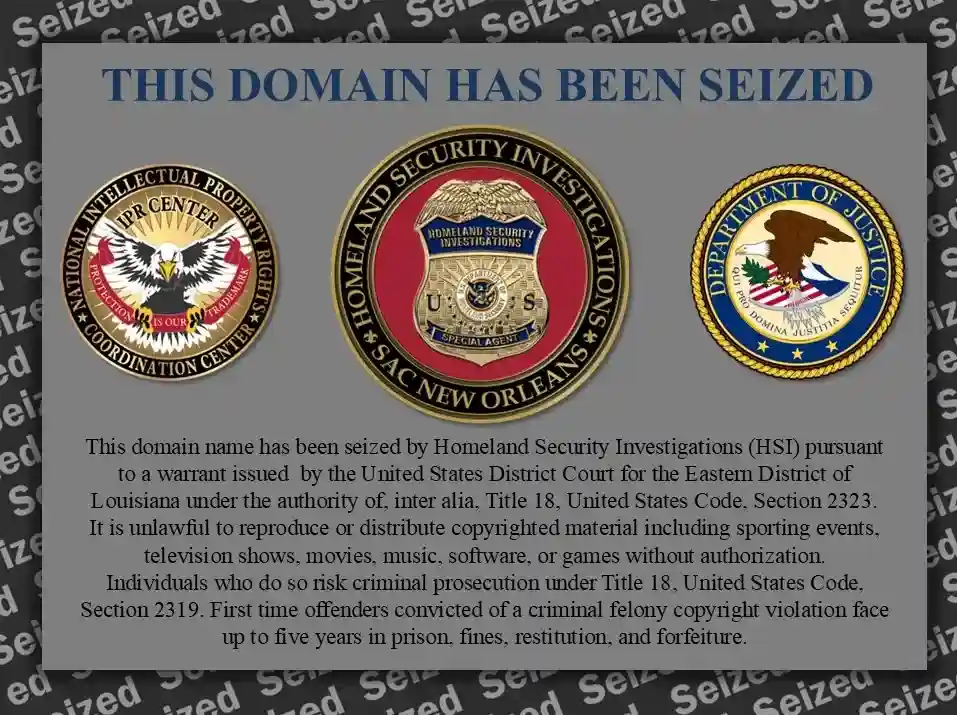Streameast: The Hydra of Sports Streaming
In the ever-evolving landscape of online streaming, few platforms have garnered as much attention and controversy as Streameast. Known for providing free access to live sports events, Streameast became a go-to site for sports fans unwilling or unable to pay for subscription services. However, on August 17, 2024, the U.S. Department of Homeland Security (DHS) seized the website, marking what many thought was the end of an era. But in a surprising turn of events, the site resurfaced under a new domain, continuing its defiant journey. This article delves into the rise, fall, and unexpected resurgence of Streameast, exploring the broader implications for sports fans and the streaming industry.
What Happened to Streameast?
Streameast, a popular but legally dubious streaming platform, was known for its extensive coverage of live sports events, including NFL games. The site offered fans an opportunity to watch their favorite teams without the hefty price tags associated with official streaming services. However, this convenience came at a cost, as Streameast operated in a legal gray area, streaming content without proper licensing.
On August 17, 2024, the U.S. Department of Homeland Security seized Streameast’s domain, effectively shutting down the site. Visitors to the website were greeted with a stern notice from the U.S. government, stating that the domain had been seized under the authority of Title 18, United States Code, Section 2323. The notice also warned that first-time offenders convicted of criminal felony copyright violations could face up to five years in prison, along with fines, restitution, and forfeiture.
The Government’s Crackdown on Illegal Streaming
The seizure of Streameast’s domain is part of a broader effort by the U.S. government to crack down on illegal streaming services. These platforms, while popular among users looking to avoid subscription fees, pose significant legal risks. The government’s actions are intended to protect the intellectual property rights of content creators and legitimate streaming services, which invest heavily in securing broadcasting rights for live sports events.
Streameast’s Resurgence: A New Domain, Same Service
Despite the government’s intervention, Streameast was quick to bounce back. According to reports, the operators of Streameast launched a new domain, restoring the service much to the delight of its user base. The resilience of Streameast is not entirely unexpected, as many similar platforms have historically found ways to circumvent government crackdowns by shifting to new domains or hosting services.
In a bold statement on X (formerly Twitter), the Streameast News Network claimed that their streams would “never go offline.” They boasted about having more decoy streams than anyone could imagine, self-replicating private servers in storage, and more domains than tech giants Apple and Google combined. This defiant stance suggests that Streameast plans to continue operating despite legal challenges, positioning itself as an enduring player in the underground streaming world.
Why Streameast Matters to Sports Fans
Streameast’s popularity stems from the growing frustration among sports fans over the increasing costs of watching live sports. With the NFL season fast approaching, many fans were left scrambling for alternatives when Streameast was initially taken down. Official streaming services like Amazon Prime Video, Peacock, YouTube TV, Netflix, ESPN+, and Paramount+ offer comprehensive sports coverage, but the cumulative costs can be prohibitive.
For instance, NFL+ alone costs $14.99 per month, and many fans subscribe to multiple services to ensure they can watch all the games they want. This has led some to seek out free (albeit illegal) alternatives like Streameast, despite the risks involved.
The Ethical and Legal Implications
While Streameast’s resurgence might be welcome news for some fans, it raises important ethical and legal questions. Streaming content without proper licensing undermines the business model of legitimate streaming services, which rely on subscription fees to pay for broadcasting rights and create original content. Moreover, using such services puts users at risk of legal consequences, as consuming pirated content is illegal under U.S. law.
Public Reaction to Streameast’s Return
The public reaction to Streameast’s return has been mixed. On one hand, many users expressed relief and gratitude, especially with the NFL season around the corner. Comments on social media reflect this sentiment, with one user stating, “Well, if the government and the professionals wouldn’t charge some outrageous prices and go back to watching the games on regular TV, people wouldn’t have to use these streaming systems.” Another user remarked, “We knew it was going to happen. Can’t hold a real one back,” while a third added, “They have like 15 different ones. They’ll never get ahold of it.”
These comments highlight the frustration among some consumers with the current state of sports broadcasting, where accessing live sports often requires multiple subscriptions and significant financial investment.
The Future of Streameast and Illegal Streaming
The future of Streameast remains uncertain. While the site has proven resilient, continuing to operate under a new domain, it remains a target for government action. The U.S. government’s recent crackdown suggests that other domains and similar sites could face similar fates in the near future.
However, the ongoing demand for free streaming options indicates that platforms like Streameast may continue to find ways to operate, even in the face of legal challenges. The broader issue of affordable access to live sports remains unresolved, and until a more consumer-friendly solution emerges, illegal streaming services are likely to persist.
Conclusion
Streameast’s story is a compelling example of the ongoing battle between illegal streaming services and government enforcement efforts. While the platform has been temporarily disrupted, its quick resurgence under a new domain highlights the challenges authorities face in shutting down such services permanently. For sports fans, the high cost of legal streaming services continues to drive demand for alternatives, even those that operate outside the law.
As the streaming landscape evolves, both consumers and providers will need to navigate the complex legal and ethical issues surrounding content distribution. In the meantime, Streameast’s defiant return serves as a reminder that in the digital age, the line between legality and accessibility can be a blurry one.





